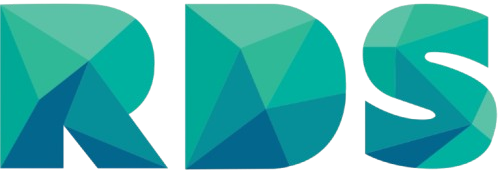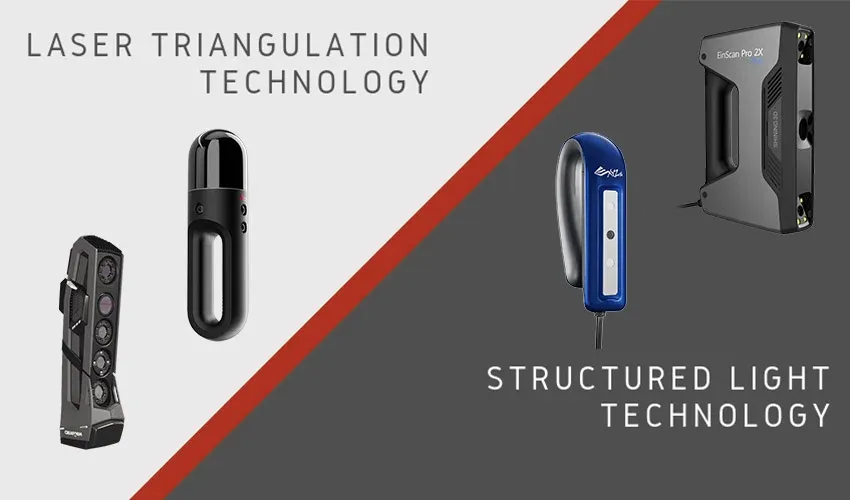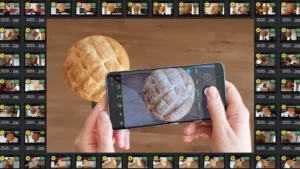Making the Right 3D Scanning Choice for Your Project Success
Did you know that selecting the wrong 3D scanning technology for your specific application can increase project costs by up to 70% and extend timelines by weeks or even months? When deciding between structured light and laser scanning, the stakes are high—and the right choice depends entirely on understanding the distinct strengths and limitations of each approach.
If you’re struggling to determine which technology will deliver optimal results for your unique requirements, you’re not alone. The technical specifications, contradictory marketing claims, and rapidly evolving capabilities create significant confusion even among experienced professionals.
Our engineering team has implemented both technologies across hundreds of diverse projects, and today we’re sharing a comprehensive side-by-side comparison that cuts through the marketing hype to help you make an informed, confident decision.
Understanding the Fundamental Technologies
Before diving into specific comparisons, let’s establish a clear understanding of how these technologies actually work.
How Structured Light Scanning Works
Structured light 3D scanning projects specific light patterns (typically grids, stripes, or other geometric patterns) onto an object’s surface. By observing how these known patterns deform when projected onto three-dimensional surfaces, the system calculates precise spatial coordinates.
The process occurs in these basic steps:
- A projector casts calibrated light patterns onto the object
- One or more cameras record how the patterns distort across surfaces
- Software analyzes the distortion to calculate 3D coordinates
- Millions of individual measurements create a comprehensive point cloud
- Post-processing converts this data into usable 3D models
This approach captures entire surface areas simultaneously rather than point-by-point, offering distinct advantages for many applications.
How Laser Scanning Works
Laser scanning (specifically laser triangulation, the most common type) projects a laser line or point onto an object’s surface. A camera offset from the laser observes the line’s position, and through triangulation principles, the system calculates the distance to each point along that line.
The fundamental process includes:
- A laser projects a line onto the object surface
- A camera views the line from a specific angle
- The system calculates distances based on the laser line’s deformation
- The laser moves systematically across the entire object
- Software assembles the sequential measurements into a complete model
According to the National Institute of Standards and Technology, both technologies can achieve professional-grade results when properly applied to appropriate applications.
Head-to-Head Comparison: Key Performance Factors
Now let’s examine how these technologies compare across the factors most critical to project success.
Accuracy and Precision
The ability to capture exact dimensions is fundamental to most scanning applications:
Structured Light Accuracy:
- Typical accuracy: 0.05mm to 0.1mm for professional systems
- More consistent across the entire field of view
- May struggle with depth accuracy on certain geometries
- Usually requires closer proximity to the object
Laser Scanning Accuracy:
- Typical accuracy: 0.02mm to 0.1mm for professional systems
- Often superior for capturing deep cavities and holes
- May offer better results with glossy or translucent surfaces
- Can maintain accuracy at greater distances from the object
“The accuracy difference is often application-specific,” notes our reverse engineering team. “For mechanical components with precise tolerances, laser often edges out structured light. For organic forms, the difference is rarely significant.”
According to the IEEE Instrumentation and Measurement Society, the theoretical accuracy limitations of both technologies are now less relevant than practical factors like calibration quality, environment control, and surface properties.
Scanning Speed and Efficiency
The time required to capture complete data has significant practical implications:
Structured Light Speed:
- Captures entire surfaces in a single projection
- Typically faster for complete object digitization
- Less motion sensitivity for handheld operations
- Quick acquisition but may require more processing time
Laser Scanning Speed:
- Sequential capture along scan lines
- Generally slower for complete object coverage
- Often requires more careful movement for handheld scanning
- Faster processing but longer acquisition time
“In our experience providing 3D scanning services, structured light systems typically complete full object scans in 30-50% less time than comparable laser systems,” explains our technical director. “However, laser systems often require less post-processing, partially offsetting this advantage.”
The American Society of Mechanical Engineers has published research indicating that structured light scanning can reduce total project completion time by 15-30% for most general applications.
Surface and Material Compatibility
Different materials and surface properties present varying challenges:
Structured Light Compatibility:
- Strengths: Textured surfaces, matte finishes, complex geometries
- Challenges: Highly reflective surfaces, transparent materials, deep recesses
- Ideal for: Organic shapes, textured objects, items with visual details
Laser Scanning Compatibility:
- Strengths: Reflective surfaces, transparent materials, deep holes
- Challenges: Very dark surfaces, rapid surface transitions, certain translucent materials
- Ideal for: Mechanical parts, shiny objects, items with deep features
“Material compatibility often becomes the deciding factor in technology selection,” notes our product design specialist. “We’ve found that laser scanning generally handles problematic surfaces with less preparation, though both technologies typically require surface treatment for optimal results with challenging materials.”
The Smithsonian Institution’s Digitization Program reports using both technologies complementarily—structured light for textured artifacts and laser scanning for reflective or transparent items—to optimize results across their diverse collection.
Capture Volume and Scalability
The size range of scannable objects significantly impacts technology selection:
Structured Light Range:
- Typically optimized for small to medium objects
- Working distance usually under 1 meter
- Volume limitations based on projector illumination
- Multiple units can be synchronized for larger coverage
Laser Scanning Range:
- Available in configurations for virtually any scale
- Can operate at distances from inches to hundreds of feet
- Maintains accuracy over greater working distances
- More adaptable to environmental scanning
“Scale considerations are particularly important for industrial applications,” explains our engineering lead. “If you’re primarily scanning items smaller than a microwave, both technologies work well. For larger objects—particularly in field environments—laser scanning often provides more practical solutions.”
According to research from the International Federation of Surveyors, laser-based systems have demonstrated superior practical performance for objects larger than 2 meters in maximum dimension.
Color and Texture Capture
The ability to record visual information beyond geometry varies significantly:
Structured Light Texture Capture:
- Often includes dedicated color cameras
- Superior texture registration in most systems
- Better color consistency across the model
- Single-pass capture of both geometry and texture
Laser Scanning Texture Capture:
- Color capture typically requires additional cameras
- May require separate texture mapping pass
- Often less consistent color registration
- Superior performance capturing geometric texture without color
“When visual appearance matters as much as dimensions, structured light typically delivers better results,” notes our visualization specialist. “For applications focused purely on dimensions, this difference becomes irrelevant.”
The Association for Computing Machinery’s Digital Library has published multiple studies confirming structured light’s advantages for applications where visual fidelity is crucial to project success.
Cost Considerations
Budget realities often influence technology selection:
Structured Light Cost Factors:
- Professional systems: $10,000-$60,000
- Entry-level systems: $3,000-$10,000
- Lower operational costs due to faster scanning
- Typically more expensive for very large volume scanning
Laser Scanning Cost Factors:
- Professional systems: $15,000-$100,000+
- Entry-level systems: $5,000-$15,000
- May involve lower software licensing costs
- More cost-effective options for specialized applications
“While initial equipment costs are important, the total project cost often depends more on labor, processing time, and accuracy requirements than on hardware selection,” advises our financial analyst. “We recommend focusing on capability alignment rather than purchase price alone.”
For organizations with occasional scanning needs, scanning service providers often represent the most cost-effective solution, providing access to multiple technologies without capital investment.
Application-Specific Recommendations
Different applications have distinct requirements that may favor one technology.
Manufacturing and Quality Control
For industrial applications focused on dimensional verification:
Best Choice for Most Manufacturing Applications: Laser Scanning
- Superior performance with reflective metal surfaces common in manufacturing
- Better capture of threaded features and small holes
- More reliable for in-line automated inspection
- Generally more robust in industrial environments
“Our manufacturing clients typically achieve better results with laser systems for quality control applications,” notes our quality assurance specialist. “The accuracy with mechanical components and better performance with metal surfaces usually outweigh the speed advantages of structured light.”
However, for plastic components and consumer products with complex geometries, structured light often proves more efficient.
Product Design and Prototyping
For creative development and iteration processes:
Best Choice for Most Design Applications: Structured Light
- Faster turnaround for iterative design cycles
- Better capture of aesthetic details and styling elements
- Superior texture and color acquisition for visual review
- More complete single-pass captures reduce modeling time
“The design process benefits enormously from structured light’s speed,” observes our product development team. “When designers need to scan, modify, and evaluate iterations quickly, the faster capture and processing can cut days from development cycles.”
For mechanical design where precision is paramount, laser scanning may still be preferred despite the time trade-off.
Cultural Heritage and Documentation
For preservation and archival applications:
Best Choice for Most Documentation Applications: Depends on Specific Items
- Structured light for textured, colored, and organic artifacts
- Laser scanning for reflective, transparent, or very large items
- Often best to employ both technologies as complementary approaches
- Consider long-term archival requirements and data standards
“Cultural heritage projects benefit from a hybrid approach,” suggests our documentation specialist. “The Smithsonian and similar institutions use both technologies strategically based on specific artifact properties rather than standardizing on a single approach.”
The long-term value of comprehensive documentation often justifies employing multiple technologies to ensure optimal results.
Medical and Healthcare Applications
For anatomical and medical device applications:
Best Choice for Most Medical Applications: Structured Light
- Non-invasive capture with minimal light exposure
- Rapid acquisition reduces patient movement issues
- Excellent performance with organic shapes
- Suitable for direct patient scanning applications
“Patient comfort and safety considerations often make structured light the preferred choice for medical applications,” explains a medical device developer we partner with. “The brief exposure time and visible light projection present fewer concerns than laser alternatives.”
For orthopedic applications and medical device manufacturing, however, laser scanning may offer superior dimensional accuracy in specific scenarios.
Implementation Considerations: Beyond the Technology
Successful implementation depends on factors beyond the core technology selection.
Environmental Factors
Both technologies are affected by the scanning environment:
- Ambient Light: Structured light is more susceptible to interference from bright ambient light
- Vibration: Laser scanning can be more affected by vibration during longer scan processes
- Dust/Particulates: Both technologies can be affected, but in different ways
- Temperature Fluctuations: Can affect calibration and accuracy of both systems
“Creating an appropriate scanning environment often has more impact on results than the specific technology choice,” advises our field operations specialist. “Controlling these variables should be considered part of the implementation plan.”
Workflow Integration
How scanning integrates into your broader processes significantly impacts success:
- Data Format Compatibility: Ensure outputs work with your CAD/CAM systems
- Processing Resources: Consider computing requirements for data handling
- Training Requirements: Account for staff learning curves
- Quality Verification Processes: Establish protocols for validating scan accuracy
“The most successful implementations we’ve supported focus as much on workflow integration as on the scanning technology itself,” notes our implementation coordinator. “The best scanner becomes a bottleneck if its output can’t flow efficiently into subsequent processes.”
Hybrid Approaches
Many organizations achieve optimal results by employing both technologies:
- Complementary Strengths: Using each technology where it excels
- Validation Protocols: Cross-checking critical measurements between systems
- Application-Specific Deployment: Selecting the appropriate technology per project
- Progressive Investment: Starting with one technology and expanding as needs evolve
The 3D scanning specialists at RDS often recommend a hybrid approach for organizations with diverse scanning requirements, either through equipment ownership or strategic use of scanning services.
Real-World Case Studies: Technology Selection in Action
Case Study 1: Automotive Component Manufacturer
A tier-one automotive supplier needed to implement scanning for both quality control and reverse engineering applications.
Challenge: The diverse materials included cast metal components, injection-molded plastics, and composite assemblies. Some required color capture for assembly verification.
Solution: After comprehensive testing:
- Laser scanning was implemented for metal component inspection
- Structured light was deployed for plastic components and assembly verification
- Software integration unified the data from both systems
- Automated comparison against CAD models standardized reporting
Result: Quality defect identification improved by 42%, while reverse engineering time decreased by 58% compared to traditional measurement methods. The hybrid approach delivered ROI 30% faster than either technology alone would have achieved.
Case Study 2: Medical Device Development
A medical device manufacturer needed scanning capabilities for both product development and regulatory documentation.
Challenge: Applications included ergonomic design, precision component measurement, and complete product documentation for FDA submission.
Solution: Technology selection was application-specific:
- Structured light scanning for ergonomic prototyping and human factors testing
- Laser scanning for precision component verification
- Standardized post-processing delivered consistent formats regardless of source
- Validation protocols confirmed accuracy for regulatory requirements
Result: Development cycles shortened by 35%, while documentation time for regulatory submissions decreased by 60%. The client successfully navigated FDA approval with zero measurement-related queries, a first in their experience.
Case Study 3: Historic Preservation Project
A preservation organization needed to document historic structures before and during restoration.
Challenge: The project involved everything from small architectural details to entire building facades, with materials ranging from weathered wood to reflective metals.
Solution: A comprehensive digitization strategy included:
- Portable structured light scanning for detailed elements and ornamentation
- Long-range laser scanning for overall building geometry
- Photogrammetry for context and visual documentation
- Integration of all data into unified 3D models
Result: The combined approach reduced on-site documentation time by 70% compared to traditional methods while capturing over 300% more detail. The digital assets proved invaluable when unexpected issues emerged during restoration, saving an estimated $180,000 in rework costs.
Making Your Decision: A Practical Framework
To select the appropriate technology for your specific needs, consider this decision framework:
Step 1: Prioritize Your Key Requirements
Rank these factors based on your specific application:
- Dimensional accuracy requirements
- Surface types and materials
- Size range of objects
- Capture speed needs
- Color/texture importance
- Environmental conditions
- Budget constraints
Step 2: Consider Your Primary Application
Match your main use case to technology strengths:
- Reverse engineering: Consider laser for mechanical parts, structured light for organic shapes
- Quality inspection: Laser often excels for precision manufacturing
- Design and iteration: Structured light typically offers faster workflows
- Documentation and archiving: May benefit from both technologies
- Animation and visualization: Structured light usually provides better visual data
Step 3: Evaluate Total Implementation Factors
Look beyond the scanner itself:
- Software compatibility with existing systems
- Training requirements for your team
- Physical space and environmental controls
- Long-term maintenance considerations
- Flexibility for future applications
Step 4: Test Before Committing
Whenever possible:
- Request sample scans of your actual parts
- Trial the complete workflow from scanning to final output
- Compare results against your specific success criteria
- Consider scanning services to test both technologies
“The most successful technology selections come from hands-on comparison with your specific applications,” advises RDS. “We routinely provide comparison scans of client parts using multiple technologies to demonstrate real-world differences.”
Conclusion: Selecting the Right Tool for Your Specific Job
Both structured light and laser scanning have evolved into sophisticated, capable technologies with distinct strengths and limitations. The “best” choice depends entirely on your specific applications, materials, accuracy requirements, and workflow integration needs.
Key takeaways for decision-makers:
- Structured light excels at speed, organic shapes, and visual fidelity
- Laser scanning dominates with reflective materials, precision, and challenging geometries
- Most organizations benefit from access to both technologies, either through ownership or services
- Implementation factors often impact success more than the base technology selection
- Testing with actual applications provides the most reliable selection guidance
Whether you’re manufacturing components, designing products, preserving artifacts, or developing medical devices, selecting the appropriate scanning technology represents a critical decision that will impact your results, efficiency, and costs.
Ready to determine which technology best suits your specific needs? RDS offers comprehensive consultation services to help you evaluate options and implement the optimal solution for your unique requirements. Our team brings decades of combined experience with both technologies across diverse applications.
What specific objects or materials will you be scanning in your next project? Share your application challenges in the comments below, or contact us directly to discuss your specific scanning needs.





